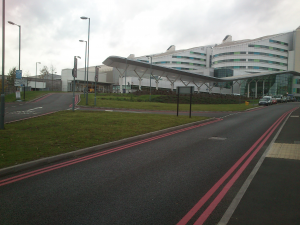There’s more to Birmingham than canals and factories. Since the dawn of history people have been utilising the landscape of the Birmingham plateau, leaving us a sign of their presence over millennia.
In the late Nineteenth Century, during the construction of the houses around Bond Street in Stirchley, a stone hand axe was found dating from the Neolithic Period (the end of the Stone Age, approximately 4000-2500 BC) which tentatively reveals the presence of stone age hunter-gatherers in the area.
Prehistoric activity continues in the area with evidence from the Bronze Age (2500-800 BC) being found nearby on Vincent Drive in Metchley, Edgbaston where excavations have uncovered eight ‘burnt mounds’. These small mounds are found throughout Britain and consist of fragmented stones and charcoal, often next to a trough designed to hold water. The stones would have been heated in a fire before being plunged into the water as a means of heating it up, whereupon they would shatter.
Then, as the trough was periodically cleaned, out a mound of debris built up, forming the burnt mounds as we see them today.
But what were they for? A general bias in Britain towards these sites being located in upland areas led to the idea that they were used by hunting parties for cooking. However, the more recent discoveries of burnt mounds in the lowlands of the Midlands, especially in places such as Moseley Bog where there are also several examples, suggest they may in fact have been an early kind of sauna, possibly used by entire communities rather than small groups of hungry hunters.
Who the prehistoric inhabitants of Birmingham were remains unclear, but as history marched on their way of life faded away, and Britain entered a new era.
Next time: the Romans are coming to Metchley.
 Edward Tesla is a local freelance writer
Edward Tesla is a local freelance writer
Please email eddietesla@hotmail.co.uk if you would like to hear more from him.

